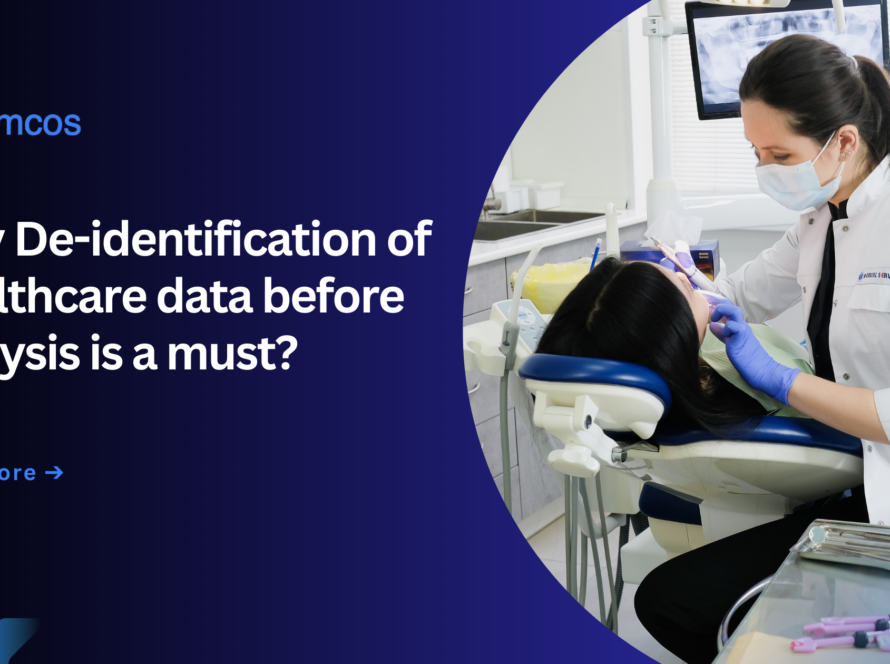Healthcare Cloud Computing for healthcare providers and those handling protected health information (PHI) have long been hesitant to store or process sensitive data in the cloud. Instead, they have relied on on-site servers, managing storage, maintenance, and security themselves.
The Covid-19 pandemic changed this perspective. During a time when healthcare providers were under immense pressure to deliver advanced treatments, it became evident that outdated IT infrastructure could be more of a barrier than a benefit to patient care and data security.Now, in the post-pandemic era, more healthcare organizations are looking to upgrade their IT systems and adopt cloud computing. Understanding this shift and implementing the transition is a basic need now.
Table of Contents
Usages of Cloud in Healthcare
“Cloud technology” has mostly been adopted by companies in the world of healthcare, but ICT healthcare claims that over 73% of those companies utilize it for operational software rather than for actual patient care. One of their main business reasons is Business Continuity Planning (BCP) and Disaster Recovery (DR). As most backups and data recovery processes are seldom accessed, cloud storage space becomes an obvious option.
Some healthcare organizations use the cloud for more complex processing tasks such as DNA sequencing. For instance, clinicians and researchers at the Icahn School of Medicine at Mount Sinai utilize cloud computing in their breast and ovarian cancer research to large scale DNA data. In addition, cloud computing drastically decreases operational costs which have greatly benefited healthcare service providers
What is Cloud Migration?
Cloud migration is the process of moving an organization’s data, applications, and infrastructure from on-site systems to cloud-based platforms. This involves transferring data and workloads to remote servers managed by third-party cloud providers.
By migrating to the cloud, organizations improve efficiency, better allocate resources, and gain the flexibility to access data from any device or location. It also reduces dependence on physical infrastructure, lowering costs while providing a scalable system that adapts to changing needs.
Why is the Healthcare Industry moving to the Cloud?
Cloud migration is the term used to refer to the transfer of an entity’s data, applications, and resources from in-office physical systems to hosted environments in the cloud. It means transferring data and workloads to cloud computing servers offered by external service providers.
When organizations migrate to the cloud, they increase their operational efficiency, as well as resource allocation flexibility, and access information from any device or location. Additionally, companies decrease their dependency on a supervisory physical IT framework which brings down overall expenditure, while at the same time providing a platform which scales to evolving requirements.
Why has Digital Transformation in Healthcare been slow?
Healthcare must follow strict rules to protect patient data, including biometrics, contact details, and financial information. Because of this, many organizations have preferred on-premises data storage, believing it offers better security and easier access during emergencies. As a result, only 47% of sensitive healthcare data is stored in the cloud, compared to 61% in other industries.Another challenge is resource allocation. Healthcare providers prioritize spending on medical equipment, staff, and treatments over digital upgrades. Delaying digital transformation has only made catching up more expensive. While the industry has long recognized the need for modernization, concerns about compliance, high costs, and uncertainty about cloud benefits have slowed progress.

Healthcare Cloud Migration Use Cases
Embracing cloud technology is essential for maximizing healthcare’s potential in the digital era. With Himcos Cloud solutions, healthcare organizations make data-driven decision-making, advance research and improve patient care through various applications, such as:
1. Correcting errors in reports
Healthcare organizations amalgamate multiple sources of data, thereby eliminating reporting discrepancies with the movement of data to the cloud. This guarantees consistent healthcare reporting, facilitating better insights and clrearing compliance goals VillageCare, a New York based care provider, was able to improve network-wide data accessibility after migrating to the cloud.
2. Providing reliable and consistent information
There is a positive externality when it comes to cloud migration for healthcare organizations, as they are able to centrally manage and standardize all data information, resulting in reliable and consistent information across all systems and locations. Companies using the data intelligence platform for data governance were able to achieve a greater level of accuracy and therefore better, more informed decision reduction risks.
3. Addressing accumulatd healthcare data analysis treas
Migration to cloud based healthcare analytics solutions enable healthcare providers and organizations to rapidly ingest endless streams of data. The ability to instantly catalog data resulted in elimination of anlaysis delays and in time enabled insights leading to better patient outcomes.
4. Advanced analytics and AI
Healthcare organizations focus more towards building AI and advanced analytical tools with the help of needed infrastructure provided through Cloud. With the Cloud-based infrastructure, predictive modeling, personalized medicine, as well as AI-enabled patient care can easily be streamlined. Data democratization solutions also centralize and ease data-driven decisions using processes and systems..
5. Gaining Insights into rare diseases
Cloud-based analytics, as well as other collaboration platforms enables constituents of healthcare organizations analyze available datasets, which leads to uncovering insights into rare diseases. This aids the early detection and treatment, and even research breakthroughs in hitherto data-poor domains. For instance, An AI analytics platform is used in many care settings to scale its data-driven capabilities affecting innovation and decision-making processes in drug discovery and development.
What’s Next?
Over the next decade, cloud computing in healthcare is expected to grow at a 17.4% annual rate, reaching a value of $280 million.Over the next decade, cloud computing in healthcare is expected to grow at a 17.4% annual rate, reaching a value of $280 million. Healthcare providers must consider a few key factors before making the move:
Secure Executive Support: Cloud adoption requires significant investment, but ROI often takes time. To ensure funding and resources, leadership must drive the transition from the top down.Eliminate Data Silos: Traditional on-site hosting limits access to specific hardware or virtual machines, restricting collaboration and remote work. A cloud-based system should break these barriers, enabling seamless integration across departments for a complete patient view.
Plan for Growth: Choose cloud services that scale with your needs. Opting for flexible solutions that allow data expansion or feature upgrades ensures long-term success without costly overhauls.
Ensure Security & Compliance: Most cloud providers offer secure, compliant environments, but it’s needed to verify that they meet industry regulations like HIPAA. For instance, if HIPAA compliance is required, ensure the vendor offers a Business Associate Agreement (BAA). Fortunately, top cloud providers have the expertise to maintain high-security standards, easing the burden on internal IT teams.

The Future of Cloud Computing in Healthcare
As healthcare organizations grow more comfortable with cloud technology, more health applications will shift to the cloud. While debates about the Affordable Care Act continue in Washington, D.C., its requirements for electronic medical records and outcome-based targets make cloud services a natural fit due to their data-intensive nature.
Even I also feel that because healthcare is highly regulated, the initial shift to the cloud has focused on non-patient care applications. This cautious approach allows providers to test the waters before handling sensitive patient data. However, as more healthcare professionals recognize the benefits of cloud adoption, the transition is expected to accelerate.
Telemedicine is a strong candidate for cloud expansion. Studies suggest that nearly 70% of routine doctor visits don’t require in-person meetings. Shifting even some of these to telemedicine platforms could significantly reduce healthcare costs—an essential goal for patients, providers, and insurers as expenses continue to rise.
Another promising area for cloud growth is “patient empowerment tools.” These cloud-based applications help individuals with chronic conditions manage their health by tracking nutrition, exercise, medication reminders, and blood glucose levels. Doctors use this data for better patient care and improving outcomes.
Its not a choice but a necessity because to improve patient outcomes and control costs, users will continue to push healthcare toward cloud adoption. The success of business-side cloud migration has already demonstrated its value, paving the way for patient-centered applications to follow in the near future.



